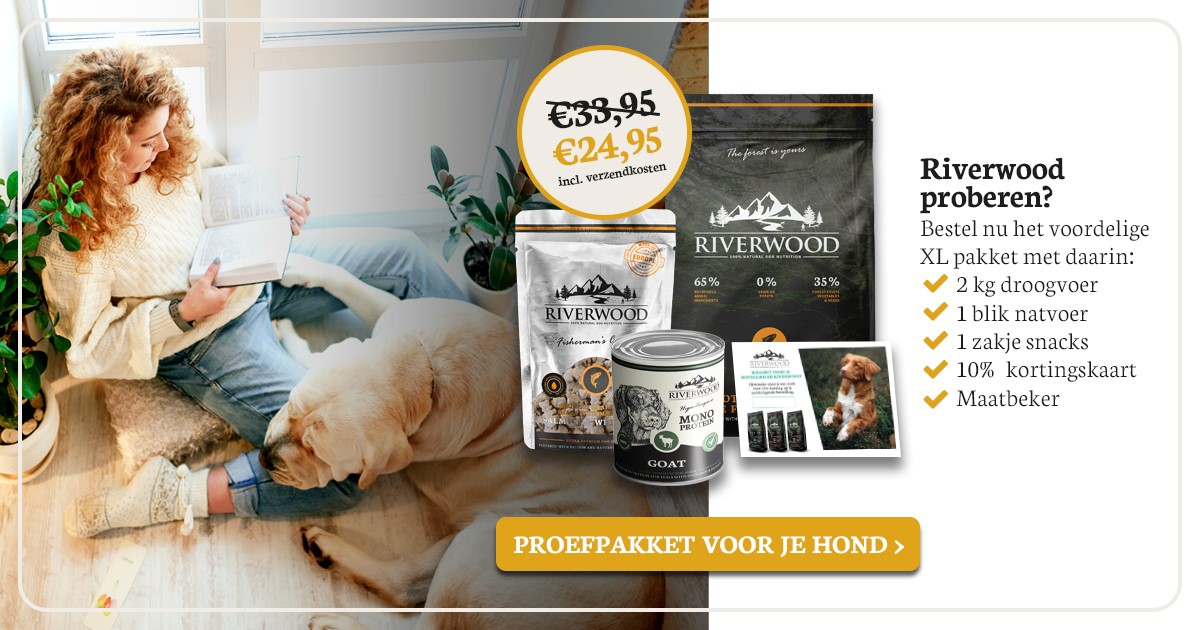Hotspot in dogs
A hot spot is a local skin inflammation that you can recognize by a dog that is incredibly itchy in a fixed spot. The animal bites, licks and scratches this spot continuously. When you check the dog's skin, you observe a bald, red and moist spot. The skin is clearly irritated and itches tremendously, because the dog does not leave the spot alone. Time for a visit to the vet, the dog probably suffers from a hot spot....

How can a dog get a hotspot?
A hot spot is a local skin inflammation that a dog causes itself. This is because the animal keeps licking, scratching and/or biting at an itchy spot.
There are several "culprits" that can cause this itching, for example: parasites (fleas or ticks), an insect bite or a (food) allergy. Stress can also be the cause of a hot spot. Some dogs suffering from stress start to bite and lick excessively at a fixed spot and cause a hotspot as a result.
Any dog can get a hotspot, however, there are breeds that are more sensitive to it. These are breeds with a thick, woolly undercoat, for example, Golden Retrievers, Bernese Mountain Dogs, Akita Inus or Leonbergers. If coat maintenance is poor in these animals, the skin can become irritated and itchy. Also, if these animals swim frequently and the coat dries slowly, this can cause irritation of the skin.
What is a hotspot?
Licking, biting and scratching break down the top layer of the skin. But it doesn't end here. Bacteria that are always present on the skin, but do not normally cause problems here, now cause an inflammation at the broken skin; this is called a hot spot. This local skin inflammation causes even more itching, causing a dog to lick and scratch at it again; resulting in a hotspot that gets bigger and bigger.
There is a vicious circle: the hot spot itches, a dog scratches it, the hot spot expands and thus causes even more itching, causing a dog to scratch even more.
How do you treat a hotspot?
To cure a hotspot, it is necessary to break the vicious cycle, starting with stopping the itching. In addition, it is necessary to clean the hotspot and keep it clean. The best way to do this is to visit a veterinarian. A veterinarian will take several steps:
- A veterinarian will remove the fur around the hotspot and will then clean the spot with a disinfectant, such as Betadine,
- A dog with a hot spot may be put on a collar so he can no longer reach the irritated spot on the skin or he may be put on a sock if the hot spot is on one of his paws,
- A veterinarian may also give a medication for the itching, Treatment of the local skin inflammation will be an *ointment or in severe cases antibiotics. *The treatment of a hot spot may consist of rubbing the spot with corticosteroid ointment. Corticosteroids are effective against inflammation and its symptoms.
Be sure to keep the skin clean and dry after treatment, otherwise the healing process will slow down. Furthermore, it is necessary to determine and eliminate the cause (parasites, stress, etc.) of a hot spot; this way you will prevent the development of a new hot spot.
How can you reduce the risk of a hotspot?
- Treat a dog regularly (preventively) against ticks and fleas,
- Treat dogs that swim often more often against ticks and fleas,
- Brush a dog with a thick and woolly undercoat regularly,
- Choosing a food that supports the skin and coat, (for example, Riverwood Scottish Salmon & Whitefish with Herring) or providing salmon oil in addition to the food (view Riverwood Norwegian Salmon Oil here).
You now know what a hot spot is and how to reduce the chances of your dog getting it. Nutrition also has a lot of effect on the quality of a dog's skin and coat.Riverwood Scottish Salmon & Whitefish is specially formulated for dogs with skin and/or coat problems.
Lots of dogs already enjoy Riverwood every day. Would you also like your dog to feast on our delicious foods and are you curious which variety would suit your dog best? Then answer a few questions here and order an inexpensive sample pack right away.




